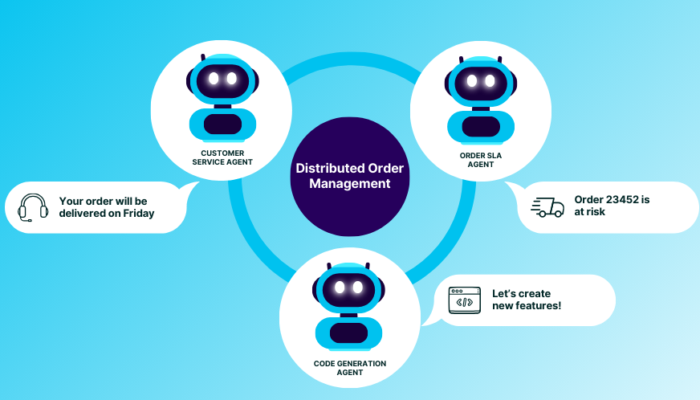No shopping experience is more disappointing than going to a store for a specific product, only to learn that it’s out of stock. But what if you can turn this negative customer experience into a positive?
If your store staff can locate that same item for the customer with real-time visibility—either at another store or in your warehouse—you can still make the sale while the customer is in your store. You can either ship the item to the customer’s home, or they can pick it up from another location. This not only solves the shopper’s immediate problem, it presents opportunities for upselling that can also increase your AOV. Furthermore, the biggest uplift may come from your lower grade stores.
Why the greatest uplift may come from lower grade stores
Not all stores are created equal. As a retailer, you’re always looking for ways to achieve the highest margins and lowest percentage of markdowns for merchandise at each store. The key is to assign the merchandise where it is most likely to sell.
Product ranging is the process used to determine which products should appear on a store’s shelves. Because every store has a limited amount of available space, most ranging decisions aim to determine which products should be allocated shelf space and which shouldn’t.
Store grading is the process of creating groups of stores that share similar attributes, like size, location and average sales. To do this accurately, you need information to derive each store’s selling uniqueness. Where is the store located? Is it in a mall, a small town or the middle of a large city? Grading determines how much each store gets of each particular product, including size and color if you’re in the apparel business. Usually flagship stores get the fullest amount of inventory while a lower graded store might not. Which means lower grade stores are more likely to be out of stock, especially towards the end of a season. This means more opportunities to recover lost sales If store staff can find an out of stock item for a customer. But to do this, you need an accurate view inventory.
Real-Time Inventory Visibility Across All Locations
The biggest challenge to out of stock recovery is stock accuracy. Inventory data is often siloed in an organization. While the POS contains store inventory, the WMS has accurate warehouse inventory, and the ERP gets updates from those systems. As a result, they’re often out of sync. ERP systems simply weren’t designed to handle near real-time inventory queries. That’s where a distributed order management system like Fluent Order Management comes in.
Order Management Systems (OMSs) are designed to consume inventory updates at scale and streamline order management processes. They keep your warehouse and in-store stock in sync with ecommerce orders and stock allocations. This data then provides accurate product availability to your ecommerce platform, customer service applications, or in-store clienteling apps. So when an out of stock arises after a customer orders, your staff have the data they need to recover the sale and improve customer satisfaction.
Turning Out-of-Stocks into Upsell Opportunities
Let’s return to that shopper who comes to your store only to find that the product she is seeking is out of stock. Rather than letting her leave empty handed and losing a sale, you should use this as a customer service opportunity. One that satisfies her search and makes her want to buy even more.
With the right OMS, you can use your POS, browser, or even a clienteling app, to determine the location of the nearest product. This strategy is also known as endless aisle. Depending on customer preference, you can have the product delivered to the customer’s home or a store that’s close to where she lives or works. Once you’ve fulfilled the basic objective, this is your sales associate’s opportunity to introduce her to complementary products that might also interest her.
More About that 5% Increase in Store Turnover
After working with dozens of clients—many in apparel and accessories—I’ve seen a consistent uplift of at least 5% after implementing endless aisle. Most of these sales can be considered incremental. These are sales that you would normally lose. Without access to accurate inventory visibility, the customer would leave the shop empty handed and go somewhere else to buy. For some verticals, like a handbag company I worked with, incremental sales ran as high as 8%.
As mentioned, a purpose-built OMS can seamlessly deliver inventory to any in-store platform, from a clienteling tablet to an in-store kiosk. However, your best bet is to use out of stocks as an opportunity for face-to-face time between the customer and store associate. While kiosks can capture an order, the experience is no different than shopping at home on a computer or smartphone. That’s a lost opportunity. As a retailer, you miss the human touchpoint that provides the customer with reassurance and even recommendations for additional products.
Try Order Management Software
For more information on how Fluent Order Management can help you recover from out of stocks, Request a Demo today.




